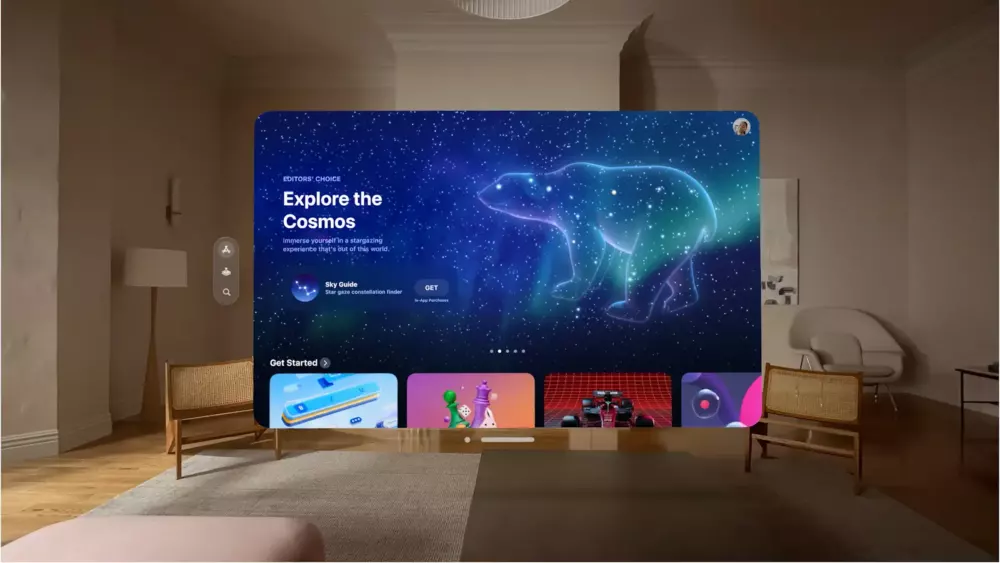
Does Apple’s Vision Pro have a business case?
Apple’s “Pro” products target business users most of the time, but what’s the business case for its high-end, high-cost Vision Pro augmented reality (AR) headset? Is there one?
In case you somehow missed it, Apple announced the Vision Pro at WWDC 23. But this is Apple we’re talking about, so rather than a mere AR headset the Vision Pro is its first “spatial computer”. In fact: “a revolutionary spatial computer that seamlessly blends digital content with the physical world, while allowing users to stay present and connected to others”.
Apple’s promotional video, below, continues in a similar style:
Building a Vision Pro ecosystem
It’s no accident that Apple chose to debut the Vision Pro at WWDC 23, even though nobody will be able to buy one at all until at least early 2024. And even then only in the United States.
WWDC is Apple’s developer conference, and it’s where Apple historically woos developers to build applications around its new software platforms. That now includes VisionOS, which shares design elements with iOS and iPadOS. However, VisionOS has significant new spatial parameters for apps to take into consideration.

Apple doesn’t want a repeat of what it did with the first generation iPhone, where apps were – strictly speaking – locked to just Apple’s chosen few.
It wants a wide app ecosystem, and it must live up to the promise of that video that if you’re an iPhone/iPad user, your “favourite apps will be there”. Apple will likely have a developer pipeline for making iOS/iPadOS apps easily transferable to VisionOS, in the same way that it did for the iPad when it launched.
But what does all this mean for business use of the Vision Pro?
Business productivity apps
While Apple’s video demo showed off its own apps that businesses may already use – such as Pages, FaceTime and Safari – Apple has also been swift to announce a number of significant productivity application partners.
First up, Adobe. Apple has confirmed there will be a version of Adobe Lightroom for the Vision Pro. If the Vision Pro takes off in the way Apple hopes it will, other Adobe apps such as Photoshop and Premiere Pro will surely follow.
Microsoft is the other big productivity player making announcements around the Vision Pro, with Excel, Word and Teams demonstrated at WWDC 23 on the new headset. That’s an interesting play for Microsoft given it has tried for some years to get industry traction for its own HoloLens. Then again, Microsoft has already announced plans to bring its Office suite to Meta’s competing Quest VR platform.
At the very least, the promise that you’ll be able to synchronise with a Mac simply by staring at it does bring up the idea that any productivity or business app could be used, albeit in a rather flat, simple-screen way.
And the early signs are that you will still largely rely on a keyboard and mouse or trackpad in front of you, despite Apple’s virtual keyboard. “I had a laborious go at trying to respond to a text message on the digital keyboard that popped up in front of me,” wrote a BBC reporter who tried out the Vision Pro at the launch.
Apple’s representatives were quick to comment: “Remember this is not a finished product!”
Visual apps will be key to success
Bringing existing flat-monitor apps to the Vision Pro is one good step, and there’s clearly scope for productivity gains using apps such as Microsoft Teams through the new headset. But business success depends on how well developers leverage three-dimensional space in productive ways.
The challenge here isn’t new. This is exactly the problem that Mark Zuckerberg has spent billions trying to solve while shifting Facebook over to Meta – and endlessly iterating on headsets ever since.
We’ve been promised virtual screens for decades now, albeit mostly in science fiction settings. It’s up to Apple and its developers to turn that into science fact.
Should you buy a Vision Pro early?
If you’re an app developer, that US $3,499 investment surely makes sense. Especially if you want to get in early before the VisionOS version of the App Store is flooded.
For more general businesses, it’s hard to look past that price unless you have a specific application that the Vision Pro can meet from day one.
That also assumes you live and work in the United States. Apple has said that the Vision Pro will come to other markets later in 2024, but there’s no timeline on when that might be.
The Vision Pro is also the first generation of a new Apple technology, and history suggests that version two will arrive rapidly and be even better. And while the price is somewhat sticker-shock-inducing right now, in a couple of years that could tumble as the technology improves.
NEXT UP

Ryan Beal, CEO & Co-Founder of SentientSports: “Sports generate some of the richest datasets globally”
We interview Ryan Beal, CEO & Co-Founder of SentientSports, a startup using AI in fan engagement and athlete protection on social media.

Paris 2024: The greenest games ever
How the Paris 2024 Olympic Gamers organisers have lived up to their promise that this is the greenest Olympics ever

Salesforce, Workday team up to launch AI employee service agent
Salesforce and Workday have marked their new strategic partnership with the launch of an AI-powered assistant to handle employee queries.
